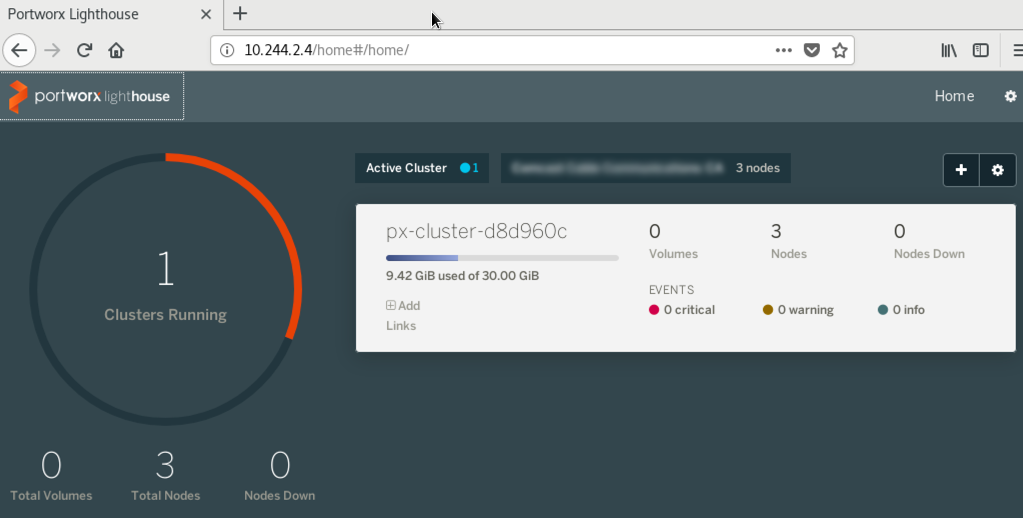
As I wrap up my first couple of weeks at Portworx, I thought that I would write a blog post about why I am so excited to have joined Portworx as a member of the Product Management team. In recent years, containers have become the standard unit of deployment for many enterprise applications. A majority of all new container-based projects use a container orchestrator (CO) to manage the project. Containerized microservices are being developed and deployed by organizations adopting cloud native platforms. The most popular container orchestrator is Kubernetes. Kubernetes has gained momentum with enterprises which are adopting cloud native platforms. As more and more enterprises adopt Kubernetes to achieve their business objectives, they need to address concerns like upgrades to the CO platform itself, container networking, new versions of software running in their pods and, critically, how to manage data used by containers running on the platform. In this blog post, we will focus on the cloud native storage and data management solution offered by Portworx to manage your application’s data in a cloud native manner using Kubernetes in order to increase application portability.
Why does the enterprise need a data platform designed for Kubernetes applications?
For stateful applications like databases, you can achieve application portability only when you achieve data portability. But even stateless applications have “state” in terms of objects like controllers, labels, bindings, etc that need to “move” along with pods when being deployed in a new environment. The result is that when you think about application portability across environments (e.g. on-prem to AWS, or AWS to Azure), you not only have to take into consideration how to move the application container but also the data and configuration associated with all the instances of the application container across environments. Portworx solves this mobility problem by allowing you to migrate the application and the data associated with the application across Kubernetes environments.

What is the Portworx data platform?
PX-Enterprise is a cloud native storage and data management solution designed to simplify the deployment, management, and migration of Kubernetes-based applications across hybrid and multi-cloud environments. In addition to solving data mobility, PX-Enterprise ensures high availability through lightning-fast data replication and application performance by making sure that Kubernetes places applications as close to their data as possible reducing the latency of applications. Portworx offers a whole host of features, such as shared volumes, encryption, and now migration with PX-Motion. Let me show how easy it is to get started.
Steps to deploy PX-Enterprise Cluster
1. Generate spec for your deployment using Portworx spec generator tool

2. Deploy the spec on your Kubernetes cluster
kubectl apply -f spec.yaml

3. Verify that the PX-Enterprise cluster status using the Portworx CLI
a. Use Portworx Command Line Interface (CLI) to check status
/opt/pwx/bin/pxctl status

b. Use Lighthouse Graphical User Interface (GUI) to check the status

Summary
PX-Enterprise manages the entire lifecycle of your application data all from directly within Kubernetes. The Portworx data platform includes a REST API, CLI, and a GUI, so that you can easily manage multiple clusters, across multiple cloud environments. Portworx data platform can help you migrate not only your application but also application data across Kubernetes environments.
What’s next?
Portworx continues to work on the open-source CSI implementation. If you would like to know more about the solution and want to request a demo, please contact one of our Portworx experts.
At a personal level, my area of focus at Portworx will be enabling application teams success on top of the Portworx platform. Here, our team will be investing in how application operators can easily and natively leverage data protection and portability when running on Portworx. At the same time, we are also investing in how application teams can increase productivity through better tools and UX for their backup and restore workflows. More on this as well, so please stay tuned!
Share
Subscribe for Updates
About Us
Portworx is the leader in cloud native storage for containers.
Thanks for subscribing!

Vick Kelkar
Vick is Director of Product at Portworx. With over 15 years in the technology and software industry, Vick’s focus is on developing new data infrastructure products for platforms like Kubernetes, Docker, PCF, and PKS.






